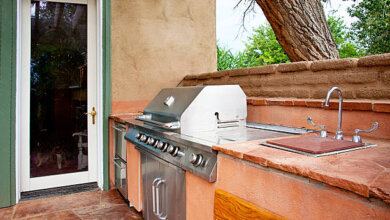How to Select and Utilize Humidity Conditioning Chambers Efficiently
This article explores the various uses of humidity conditioning chambers across industries and offers practical tips for selecting the right chamber for your specific needs.

Maintaining the right environmental conditions is essential in many industries where moisture can affect the quality, performance, and durability of materials and products. This is where a humidity conditioning chamber becomes a valuable tool. It helps simulate controlled humidity levels for testing and conditioning purposes.
This article explores the various uses of humidity conditioning chambers across industries and offers practical tips for selecting the right chamber for your specific needs. Additionally, we will discuss factors that influence the humidity conditioning chamber to help guide your purchasing decisions.
What Is a Humidity Conditioning Chamber?
A humidity conditioning chamber is a specialized device designed to create and maintain specific relative humidity levels within a closed environment. It allows for precise control of moisture and temperature conditions to replicate different climates or storage environments.
The ability to accurately regulate humidity is important for testing material properties, aging products, or preparing samples for quality control. These chambers come in various sizes and configurations, from small benchtop models for laboratory use to large walk-in rooms for industrial applications.
Common Uses of Humidity Conditioning Chambers
Humidity conditioning chambers serve many purposes depending on the industry and the type of materials being tested. Here are some common applications:
1. Pharmaceutical Industry
In pharmaceuticals, the stability of medicines and packaging under different humidity conditions is critical. Exposure to moisture can lead to chemical degradation or reduced shelf life. Humidity conditioning chambers help simulate accelerated aging to assess drug stability and packaging integrity.
2. Textiles and Fabrics
Textile manufacturers use humidity conditioning chambers to study the effects of moisture on fibers and fabric performance. Humidity can influence properties such as elasticity, shrinkage, and colorfastness. Conditioning samples in controlled humidity allows for consistent and reliable testing results.
3. Electronics and Electrical Components
Electronic devices and components can be sensitive to humidity, which may cause corrosion or insulation failure. Humidity conditioning chambers are used to test how products withstand moisture exposure, ensuring reliability and longevity.
4. Food and Packaging
The shelf life of food products and packaging materials depends significantly on humidity conditions. Testing in a humidity conditioning chamber helps evaluate the moisture barrier properties of packaging and the stability of food items under various storage environments.
5. Automotive and Aerospace
Components such as seals, gaskets, and composites are tested for moisture resistance. Exposure to humidity can affect material performance and safety. Conditioning chambers simulate real-world climatic conditions to assess durability.
How to Choose the Right Humidity Conditioning Chamber
Selecting the correct humidity conditioning chamber depends on your testing needs, budget, and operational environment. Here are some important factors to consider:
Humidity and Temperature Range
Make sure the chamber supports the range of humidity and temperature levels your application requires. Some materials may need conditioning at very high humidity, while others may require cycling between dry and moist conditions.
Chamber Size and Capacity
The size of the chamber should be appropriate for your sample size or production batch. Smaller benchtop chambers are suitable for labs and small samples, while larger walk-in chambers are needed for bulk materials or products.
Control and Accuracy
Look for chambers with reliable control systems that offer precise humidity and temperature regulation. Digital controllers with programmable cycles help automate testing and improve repeatability.
Construction and Materials
Chambers should be constructed with corrosion-resistant materials such as stainless steel to withstand humid environments. Proper insulation and sealing ensure energy efficiency and consistent conditions inside the chamber.
Compliance with Standards
Depending on your industry, the chamber may need to meet specific standards or certifications. Check if the equipment adheres to guidelines such as ASTM, ISO, or other relevant testing protocols.
Maintenance and Best Practices
Proper maintenance is essential to keep the humidity conditioning chamber functioning accurately and efficiently. Here are some best practices:
- Regularly clean and disinfect the chamber interior to prevent mold or bacterial growth.
- Check and refill water reservoirs or humidifiers according to the manufacturer’s instructions.
- Calibrate sensors periodically to maintain measurement accuracy.
- Inspect seals and insulation for wear and tear to avoid humidity leaks.
- Keep a log of operating conditions and maintenance activities for quality control.
Understanding Humidity Conditioning Chamber Price
The humidity conditioning chamber price varies widely based on features, size, and precision. Entry-level models suitable for basic laboratory use can be affordable, while advanced chambers with programmable controls, larger capacities, or additional features cost more.
Some key factors influencing the price include:
- The volume of the chamber
- Temperature and humidity range and control precision
- The type of humidity generation system used (e.g., steam, ultrasonic)
- Build quality and materials
- Inclusion of data logging, remote monitoring, or safety features
When comparing prices, it’s important to consider the total cost of ownership, including maintenance, calibration, and potential upgrades.
Final Thoughts
A humidity conditioning chamber plays an essential role in simulating environmental conditions to test and condition materials effectively. Its uses span numerous industries where moisture can impact quality and durability.
Proper maintenance and operation are equally important to ensure reliable and consistent results over time. Choosing the right humidity conditioning chamber, businesses and researchers can confidently evaluate product performance and improve quality assurance.



